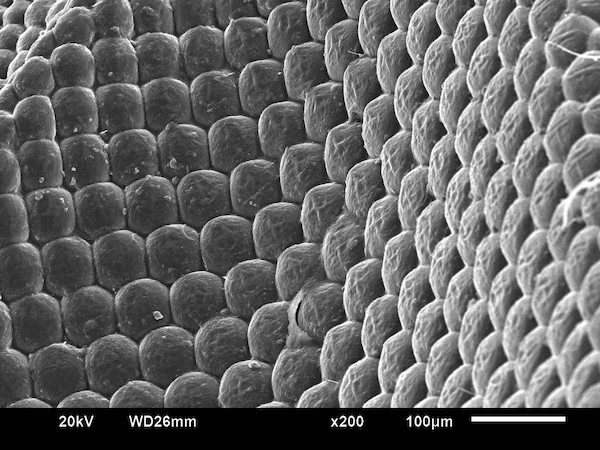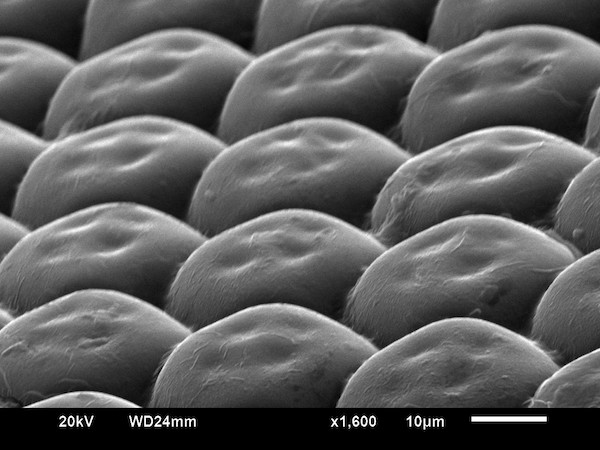Introduction
Forensic science and medicine is science and medicine that is in the service of the law. Forensic scientists and pathologists assist in uncovering the truth in the pursuit of justice.
"Every contact leaves a trace" – Locard's principle is one of the most well-known of forensic science. Science analyses trace evidence to answer five important questions: who, what, when, where and how. In our laboratory, our research adds new information to make retrieval and analysis of evidence more efficient and effective.
How the laboratory was formed
The National University of Singapore (NUS) Forensic Science Research Laboratory was founded in August 2017. Located at the Department of Biological Sciences, it is the only tertiary institution forensic research laboratory in Singapore. The laboratory started with four branches of study – document examination, fingerprint identification, entomology and paedology – but now includes other fields like toxicology and pathology. Projects usually involve collaborators within NUS as well as external collaborators like the Singapore Police Force (SPF), Health Sciences Authority (HSA) and Central Narcotics Bureau (CNB). Eager students enter the laboratory as "forensic explorers", learning while carrying out projects at the same time. A stringent selection process selects highly motivated students who conduct preliminary studies before moving on to execute their own projects.
NUS offers both undergraduate and postgraduate forensic science modules. Undergraduate modules include Forensic Toxicology and Poisons, Forensic Entomology, and Articulating Probability and Statistics in Court. These academic modules incorporate fun and interesting practical sessions to help students understand each field. Collaborators include various NUS departments like the Department of Pharmacy, Department of Statistics and Data Science, and other sections in the Department of Biological Sciences.
Students who seek a deeper understanding in forensic science can learn from expert practitioners through hands-on experiential learning in the NUS Master of Science (Forensic Science) programme. For example, in Advanced Crime Scene Investigation Techniques, SPF experts share their knowledge and experiences in crime scene processing, while experts from the Home Team Science and Technology Agency provide insights in areas like forensic defence science and digital forensics. Psychiatrists and psychologists from the Institute of Mental Health and the Ministry of Home Affairs, respectively, help students understand the importance and limitations of psychological evidence in court in Forensic Psychiatry and Psychology.
Forensic toxicology – the dose makes the poison
Forensic toxicology helps in the detection of harmful substances either in the body or in a medium. Harmful substances can cause harm and death by incapacitating one's mental capability, being abused, and adulterating food and medical products. In the late 1800s, the Singapore Government was concerned about the quality of liquor supplied to sailors. There were also concerns about the safety of food and drugs, and the nature of local plant poisons. In the early 1900s, chandu (opium) became a concern. Before World War II, the main poisons of concern included caustic soda, morphine, alcohols, tuba root and arsenic. After the war, other poisons included heavy metals and plant alkaloids. Since independence, pharmaceuticals have become important in toxicology, and instrumentation has become more and more sophisticated.
Students in the laboratory have the opportunity to work with the CNB and HSA to conduct analytical testing on confiscated items, such as illicit drugs and controlled or adulterated health products. Forensic toxicology is one of the author's (Raymond) favourite fields in forensic science and he was lucky enough to do an insightful internship with the HSA's Health Product Regulation Group. A current student project in the laboratory is determining the limit of detection for some controlled substances, which may be present in minute amounts, using Raman spectroscopy.
Dactyloscopy – tiny mountain ranges on the fingers
In the 1870s, Scottish surgeon Henry Faulds was working as a missionary in Japan. While out on an archaeological dig, he noticed unique impressions left on ancient clay fragments, and wondered whether the ridges on his fingertips were unique. Soon after this, there was a robbery in the hospital where he worked, and a suspect was arrested. Based on fingerprints found at the crime scene, Faulds was able to exonerate the suspect and persuade the police to release him. This remarkable event occurred during a period when the use of fingerprints for identification was not yet established.
Dactyloscopy is the study of fingerprints for identification purposes. Fingerprints are created from the ridges and furrows on the fingers, and everyone has their own unique pattern. Have you ever wondered how fingerprints are formed and why they are unique to even identical twins? The secret lies within the uterus. Epidermal basal cells undergo increased proliferation at around the gestational age of seven to ten weeks. The formation and regression of the volar pads (transient subepidermal mesenchymal eminences) adds stress to the proliferating cells, giving rise to precursors of ridges. Sporadic fetal movements create additional stress from friction against the uterine wall. These processes eventually lead to individualising of fingerprints.
Methods of fingerprint collection include powder dusting and cyanoacrylate (superglue) fuming. Fuming is a technique which greatly enhances the clarity of the deposited latent print. It allows for lifting prints off uneven and difficult-to-dust surfaces, including from the skin of corpses. Lifted prints can then be compared against known prints, based on specific plot points called minutiae, which characterise the ridges. Examples of important minutiae include where ridges end and birfurcate, or where they form dots, islands, lakes, spurs, bridges and crossovers.
Fingerprint matching can be a very tedious process. The laboratory is researching on the use of software that can reliably match fingerprint patterns, and the statistical models of different patterns in relation to ethnicity.
Forensic entomology – ancient creatures that "pronounce" the time of death
Insects, in particular flies, can give a range of time of death in a rather unique way – their life cycle. When animal or human life is extinguished, a panoply of insects, equipped with a keen sense of smell, are able to find a suitable corpse to lay their eggs, which hatch into maggots. These necrophagous flies claim the bodies of the departed for lodging and board, making it their personal bed and breakfast. A minimum post-mortem interval can be estimated by studying the population of maggots present. Maggot size is indicative of the fly's life cycle stage. A back-calculation to the day when the flies first laid their eggs corresponds to a likely range of the time of death.
The differences in insect species composition and life cycle time depends partly on environmental conditions. In our laboratory, we research differences such as arrival time, species and number of flies by concealing chicken carcasses using various objects like cloth, plastic containers and plastic bags. This information, known as carrion ecology, can be applied to actual cases to offer a more accurate estimation of the post-mortem interval. There is still a lot to learn – about how maggots develop, their role in decomposition and the ecosystem surrounding a body, and what they do when they are not feeding. If we don't fully understand what these flying, walking and wriggling critters are up to, we are at risk of making false assumptions regarding a crime scene. The research will help to fill in the blanks.
Conclusion
The story of forensic science and medicine is the story of how each piece of forensic evidence forms a sentence, and we combine the sentences to form a book. The NUS Forensic Science Research Laboratory and the NUS forensic programmes will be the petri dishes which will incubate future generations of forensic scientists and pathologists. In the future, forensic science will comprise powerful tools used to solve crimes, but it is not infallible. Its use needs to be scrutinised with care and objectivity to achieve objective findings, for the prosecution of criminals and to absolve the innocent.
Interesting Insectoid Insights
Scanning electron micrograph images are produced by a focused beam of electrons directed at the specimen. Some electrons ionise the specimen while some are reflected as backscattered electrons. Ionised specimens also release secondary electrons. Detectors reconstruct the backscattered and secondary electrons to produce images of high magnification.
Fly egg


Typically, it takes around 23 hours at 21°C for blowfly eggs to hatch. Exposed wounds and natural body openings are more prone to decomposition by bacteria. Hence, these areas are usually prime breeding sites for the flies as the decaying material provides food for the hatched larvae.
Blowfly


Blowflies are usually the “first responders” and arrive at the corpse within a day, which makes them one of the key species to study when estimating the post-mortem interval. Their acute sense of smell allows them to locate a corpse up to 20 km away.
Fleshfly


Fleshflies belongs to the same superfamily of Oestroidea as blowflies. They arrive at the corpse later as compared to blowflies at around four days after death, as they pick up the smell of the gas produced from putrefaction of the corpse. Notably, they are territorial and will kick out other flies that compete for the breeding sites.
Maggots


The larvae stage of flies belonging to the suborder Brachycera are often referred to as maggots. Maggots can be classified into three stages: instar 1, 2 and 3.The time intervals between each stage are relatively constant, making them useful for estimation of the post-mortem interval. The timespan of each stage is directly influenced by the ambient temperature – the higher the temperature, the shorter the time spent in each instar.
Blowfly eye


Fleshfly eye


Flies are known to have compound eyes which are made up of thousands of small hexagonal units known as ommatidium. Each unit provides information of just a small area of the whole image. Flies are built to be highly sensitive to any movement across each of these small areas. Male flies make use of this motion sensitivity to look out for potential mates. Mating is crucial as it precedes the laying of eggs on the corpse which subsequently can help us estimate the post-mortem interval.